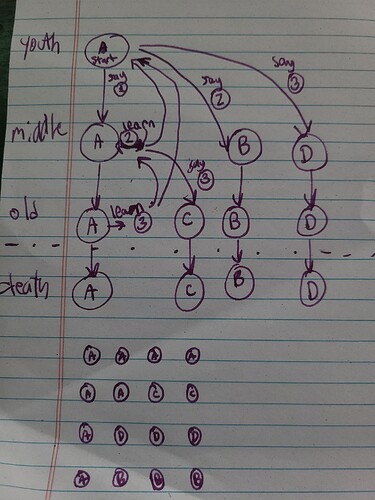For those who don’t know, time caves in IF are heavily branched stories which do not merge. There’s a good explanation here:
My husb and I are planning a new parser game and it’s shaping out to be a time cave, which is kind of intimidating. The basic idea is you’re going backward & forward in time a bunch (to simplify: an NPC’s youth, middle age, & old age) and the things you say to them create different timelines. Thankfully there is an end point (after their death), but it can be convoluted to get to the various far future endings, especially desireable ones. There is state tracking as well to see what’s changed in the past, present, & future.
Thinking about all the variations of what changes based on the rules we’ve set for the game is getting rapidly very broad and complex, even though the rules are very simple (you can only say things, no messing with objects or whatnot, but you can say them at any point in time). we have like 10 planned out branches starting from one statement & its sensical consequences right now. And having multiple things route to the same endings (say, “bad”, “good”, “middling”) seems unsatisfying when time manipulation can affect a lot in radical ways (slight conditional variations on endings would help, but not fix it entirely).
How would you prevent a time cave here, or implement & write it in a way that wouldn’t take you 50 years?
